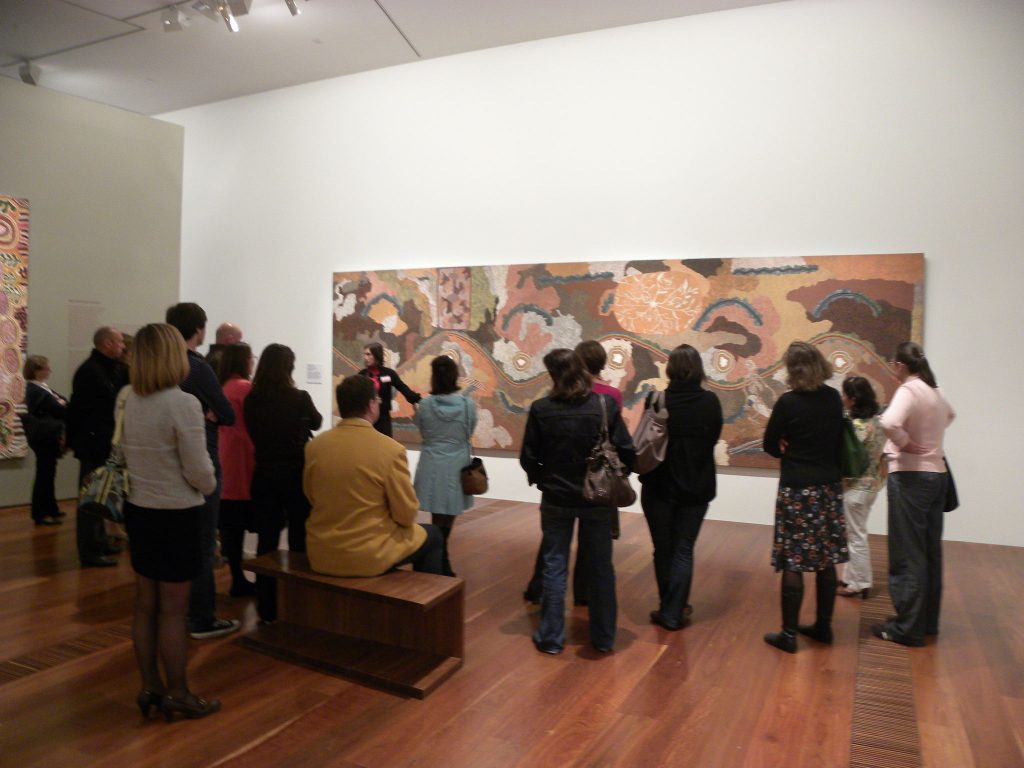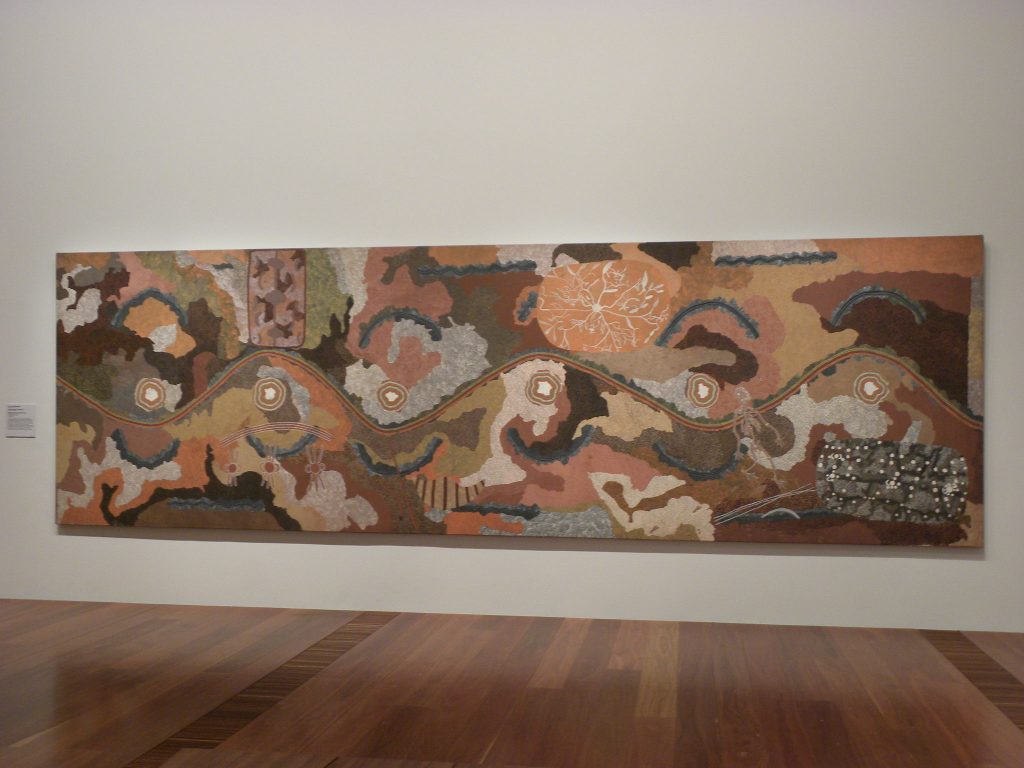
Guided Tour with IDAIA’s Director and Founder, Solenne Ducos-Lamotte in front of artwork by artists Tim Leura Tjapaltjarri (Anmatyerr c.1929-1984) and Clifford Possum Tjapaltjarri (Anmatyerr c.1932-2002), Spirit Dreaming through Napperby country, 1980 – 207.7 x 670.8 cm – Synthetic polymer paint on canvas
© the Artists © IDAIA
Tjukurrtjanu: Origins of Western Desert Art (Aux sources de la peinture aborigène) is a historical touring exhibition originally conceived by the National Gallery of Victoria in Melbourne, Australia, in partnership with Papunya Tula Artists Pty Ltd in 2011, and travelling to the musée du quai Branly in Paris, France.
This groundbreaking exhibition celebrates the 40th anniversary of the Papunya Tula movement, starting point of contemporary Aboriginal acrylic painting and now internationally recognized as one of the most important events in Australian Art History:
- it gathers together more than 200 paintings and 70 objects, including some of the first artworks ever carried out at Papunya Tula by the very artists who initiated this movement in the 1970s;
- establishes the vital connection between the Papunya Tula movement and its iconographic and spiritual sources in ephemeral designs made for use in ceremony;
- recounts its evolution, from the first panels to the large canvases of the beginning of the 1980s;
- and involves prominent artists including Kaapa Tjampitjinpa, Billy Stockman Tjapaltjarri, Long Jack Phillipus Tjakamarra, Clifford Possum Tjapaltjarri and Tim Leura Tjapaltjarri.
BACKGROUND INFORMATION
The Tjukurrpa (Dreaming) is the cornerstone of the history and very being of the people of the Western Desert. The narratives of the Dreaming, passed on from generation to generation through a complex system of clan affiliation and kinship, tell the stories of mythical ancestors who created and shaped the world, its landscapes, its fauna and flora, and the men and spirits who inhabit it. Through ancestral ritual practices, including ceremonial dancing, singing and painting, the Western Desert people actualize the Dreaming and summon up their mythical ancestors.
When, in 1971, the Aboriginal artists of Papunya, prompted by Geoffrey Bardon, the art teacher of Papunya Special School, transpose the motifs employed in ephemeral ritual paintings to recycled wooden panels, they set the sacred designs of the Dreaming on perennial supports for the first time in History, thus launching a major artistic movement and creating an astonishingly inventive formal art, saturated with meaning. In June 1972, the Papunya School Painters adopt the name “Papunya Tula”, referring to the smaller of the two hills located near Papunya, site of the Honey Ant Dreaming. Their works change the manner of understanding the territory and conceiving the history of Australian art.
Source: National Gallery of Victoria and musée du quai Branly.
